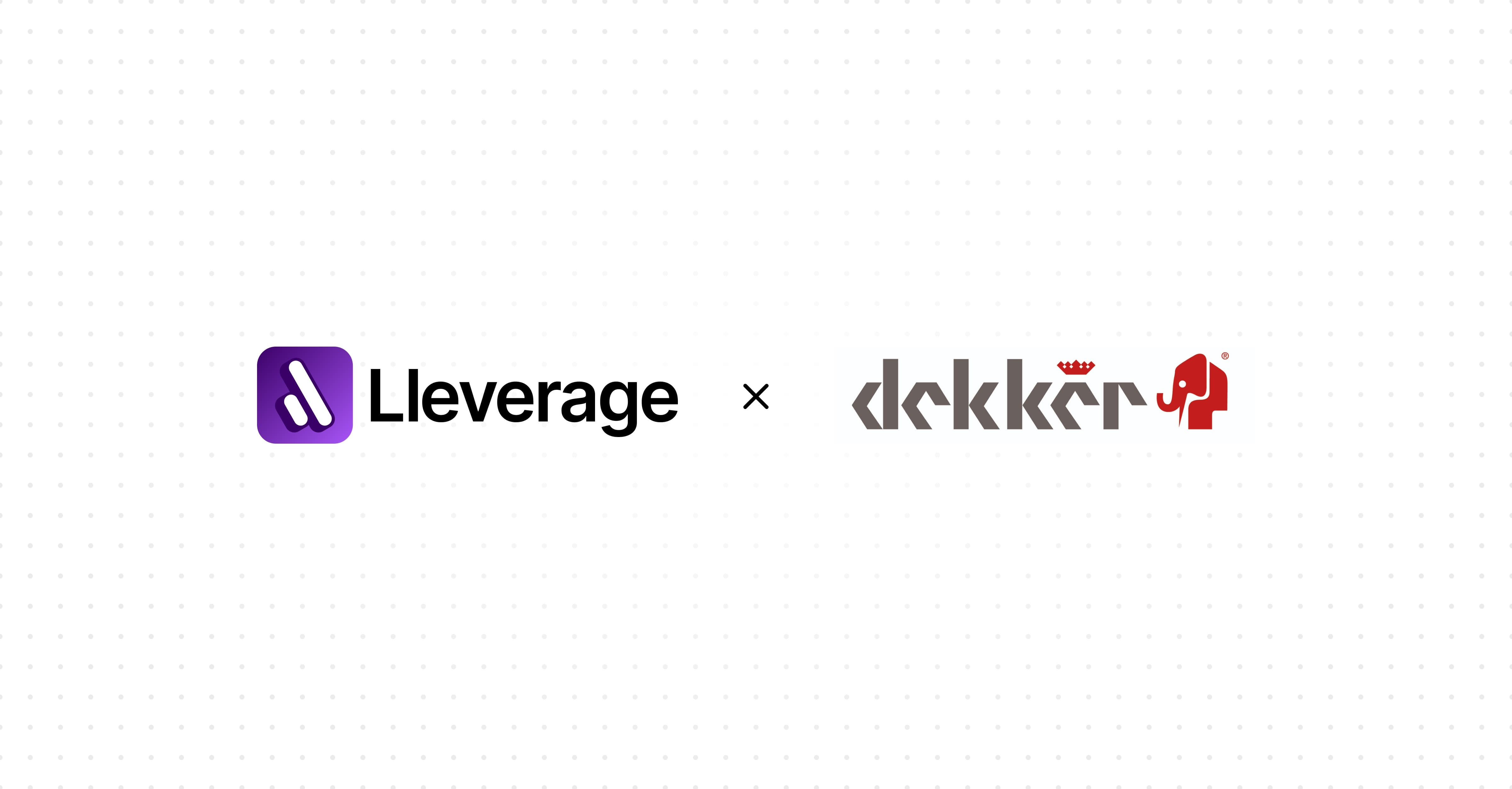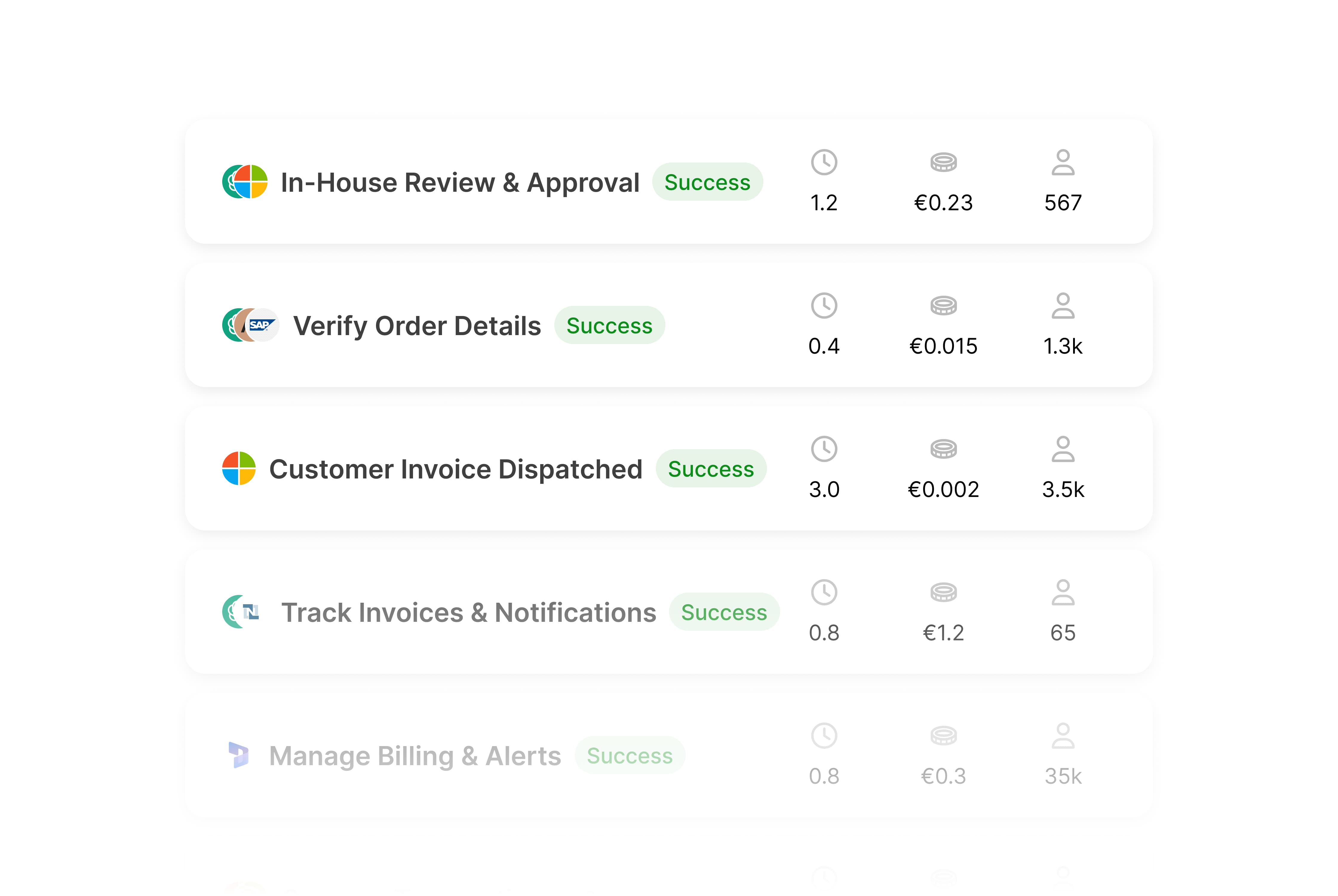How a 140-Year-Old Wood Company Eliminated Manual Order Processing With AI Automation
Koninklijke Dekker revolutionized their inside sales operations by transforming Excel chaos into intelligent automation, proving that even traditional industries can embrace the AI future.

Most 140-year-old companies aren't exactly known for embracing cutting-edge technology. But Koninklijke Dekker, one of Europe's most progressive timber companies, had a problem that tradition couldn't solve: their inside sales team was drowning in manual order processing.
"We had a lot of Excel sheets, PDFs or text emails coming in with an order. This requires a lot of interpretation from our inside staff," explains Mart from Dekker's Continuous Improvement Team.
Sound familiar? If your team spends hours manually processing orders, extracting data from various document formats, and interpreting customer requirements, you're not alone. But as Dekker discovered, there's a smarter way forward.
The Challenge: When Tradition Meets Modern Demands
Koninklijke Dekker has been perfecting their craft for nearly a century and a half. As a leading European lumber company specializing in doors, baseboards, profiles, and raw wood trading, they've built their reputation on quality and customer service. But their order intake process was anything but streamlined.
Their inside sales department faced a daily challenge that many manufacturers will recognize:
The Manual Processing Nightmare
- Orders arriving in multiple formats: Excel spreadsheets, PDF documents, and unstructured text emails
- Each order requiring significant manual interpretation from sales staff
- Time-consuming data entry processes that prevented focus on actual customer service
- High risk of errors in manual transcription and interpretation
"This was mostly done manually. You actually want to get rid of that," Mart explains about their pre-automation state.
The Traditional Industry Dilemma
As Mart puts it: "It is a fairly traditional market that we are entering in. And so we are also continuously looking for how can we actually exist for another 100 years."
This perfectly captures the challenge facing traditional industries today. The businesses that survive and thrive for another century won't be those that cling to old methods, but those that thoughtfully embrace technology to enhance their core capabilities.
With over 50,000 m³ of wood and approximately 13,000 unique products in stock, serving key markets across the Netherlands, Germany, France, Belgium, Austria, England, and Ireland, Dekker needed a solution that could handle complexity and scale.
Enter AI: A Strategic Solution
Rather than accepting manual processing as "just how things are done," Dekker took a strategic approach to finding a solution. Their evaluation process offers valuable lessons for any company considering AI automation.
The Requirements Framework Dekker didn't jump at the first shiny technology they found. Instead, they put together a comprehensive set of requirements:
- Data Protection: "We felt it was very important that our data be well protected. And so that we can't have problems with that later as well."
- Proven Capability: The solution needed to handle unstructured data effectively
- Integration Potential: Must work with their existing systems and processes
- Trust and Partnership: Finding a vendor they could genuinely partner with, not just purchase from
The Evaluation Process
"There are countless solutions on the market," Mart notes. "We went to market with these requirements. We actually ended up at Lleverage pretty quickly."
This choice highlights a crucial point about AI adoption: the technology is important, but the partnership and trust factor often determines success or failure.
The Transformation Process
The implementation process reveals how AI automation can be both powerful and accessible, even for traditional industries without extensive technical resources.
Guided Implementation
"While implementing with Lleverage, we were heartily guided. Lleverage provides all the resources we needed to describe the right process, making the right solution."
This hands-on approach proved crucial. Rather than being left to figure out complex AI implementation alone, Dekker received comprehensive support throughout the process.
Collaborative Development
"At every step they have been present to make it a success."
The key insight here is that successful AI implementation isn't about replacing human expertise with technology. It's about augmenting human capabilities with intelligent automation that handles the routine work while freeing people for higher-value activities.
The Solution Architecture
While the video doesn't dive into technical details, Dekker's solution addresses the core challenge of unstructured data processing - taking orders in various formats (Excel, PDF, text emails) and automatically extracting structured, actionable information.
This type of AI document processing represents exactly what modern manufacturing companies need: intelligent systems that can understand context, interpret requirements, and transform chaotic data inputs into organized, actionable information.
Results That Speak Volumes
The transformation delivered measurable improvements across multiple dimensions of their business operations.
Enhanced Data Quality
"Since we implemented this solution with Lleverage we particularly see an improvement in our data quality, not only in our inside sales department but also in our manufacturing and logistics department, we simply see that we make fewer mistakes and can work more accurately."
This improvement in data quality creates a cascade of benefits throughout the organization. When order information is accurate from the start, everything downstream works better - production planning, logistics coordination, and customer fulfillment.
Improved Customer Service
"Therefore deliver higher quality to our customers."
By eliminating manual processing bottlenecks and reducing errors, Dekker can now focus their human expertise where it matters most: building relationships and solving complex customer problems.
Operational Efficiency
While specific time savings aren't quantified in the video, the transformation from manual processing to automated interpretation represents a fundamental shift in how the inside sales team spends their time. Instead of data entry and format translation, they can focus on understanding customer needs and providing expert guidance.
Why This Matters for Your Business
Dekker's story illustrates several critical trends that every business leader should understand:
1. AI Is Ready for Real-World Manufacturing Applications
This isn't a pilot project or proof-of-concept. It's production-ready AI automation handling real customer orders for a company with 140 years of reputation to protect.
2. Traditional Industries Can Successfully Adopt AI
You don't need to be a tech company to benefit from AI automation. In fact, traditional industries often see the biggest impact because they have the most manual processes to optimize.
3. Data Protection and Trust Are Achievable
Concerns about data security and AI reliability can be addressed with the right partner and approach. Dekker's careful evaluation process shows how to balance innovation with risk management.
4. Implementation Support Makes the Difference
The most sophisticated AI technology is worthless without proper implementation support. Dekker's positive experience highlights the importance of choosing partners who provide comprehensive guidance, not just software.
5. The ROI Extends Beyond Time Savings
While automation obviously saves time, the real value often comes from improved accuracy, better customer service, and the ability to scale operations without proportional increases in staff.
Getting Started With Order Processing Automation
If Dekker's story resonates with your situation, here's how to approach order processing automation:
Step 1: Audit Your Current Process Document exactly how orders flow through your organization:
- What formats do orders arrive in?
- How much time does manual processing consume?
- Where do errors typically occur?
- What's the cost of processing delays?
Step 2: Define Your Requirements Following Dekker's example, establish clear criteria:
- Data security and compliance needs
- Integration requirements with existing systems
- Performance expectations and success metrics
- Support and partnership requirements
Step 3: Evaluate AI-Native Solutions Traditional automation tools struggle with the variety and complexity of real-world order processing. Look for AI-native platforms that can:
- Handle multiple document formats automatically
- Understand context and intent, not just extract text
- Learn and improve from your specific data
- Integrate with your existing business systems
Step 4: Start with a Focused Pilot Don't try to automate everything at once. Begin with your highest-volume, most standardized order types to prove value and build confidence.
Step 5: Plan for Scale Design your solution with growth in mind. As AI improves and your team gains confidence, you'll want to expand automation to more complex scenarios.
Ready to Transform Your Order Processing?
Dekker's success story proves that AI automation isn't just for tech companies. Traditional manufacturers can achieve dramatic improvements in efficiency, accuracy, and customer service by thoughtfully implementing intelligent automation.
The question isn't whether AI will transform manufacturing operations. It's whether you'll lead that transformation or be forced to catch up later.
If your team is spending significant time on manual order processing, document interpretation, or data entry, book a demo to see how AI automation can transform your operations just like it did for Koninklijke Dekker.
Learn more about AI automation for manufacturing:

.jpg)




